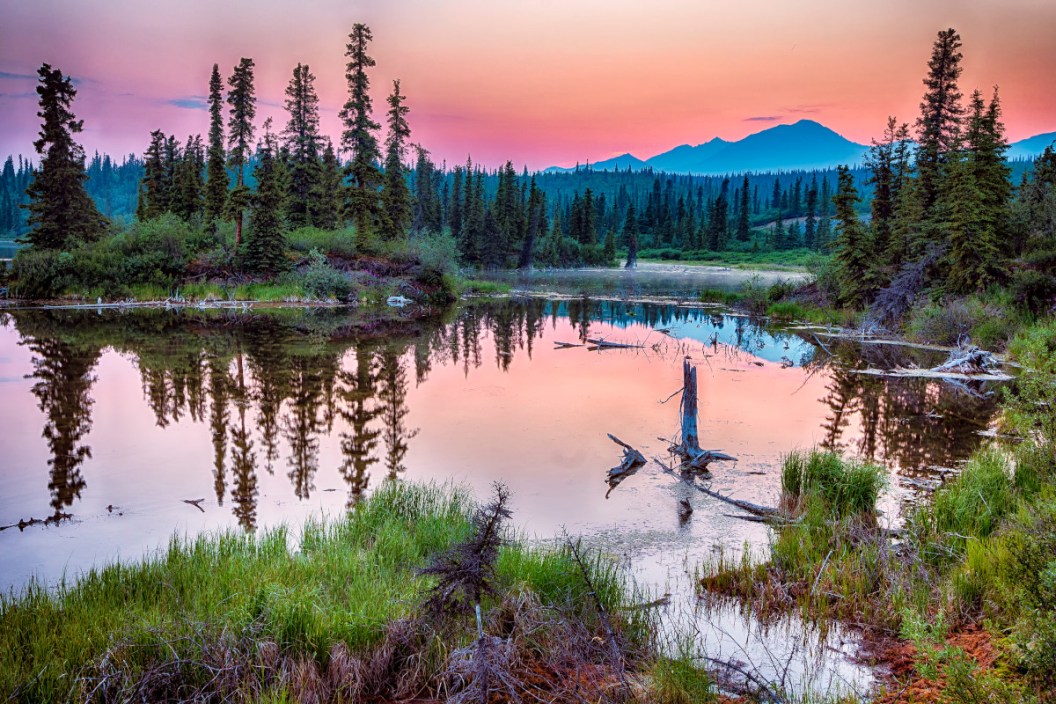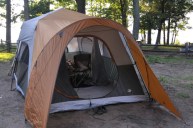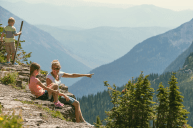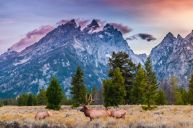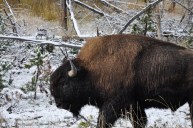I've sworn off ever visiting Grand Teton and Yellowstone National Parks again during the summer months. If you've ever been, you likely know why. From June through August, each park sees an insufferable invasion of tourists, many of whom seem like they have never spent more than five collective minutes in nature up until that point. I'll never forget the nearly three-mile traffic jam of cars in Hayden Valley and seeing 150 people grouped up in a field watching a large grizzly bear lumber through the brush. I'm not knocking Yellowstone in any way. It's a beautiful park filled with stunning natural features and fascinating wildlife, but the throngs of people during tourist season leave a lot to be desired. There's only so much I can take of people standing in the middle of the road with binoculars or getting dangerously close to bison with their small children. I go into nature to get away from the rat race, not end up in a traffic jam. And it's only getting worse. National Park visitations keep going up year after year with seemingly no end in sight.
While I'll only visit Yellowstone in the fall and winter now, that leaves the question of where I should go during the warmer months. Fortunately, there are options for National Parks that are still quite wild. Most of these take a lot of extra effort to reach, but it's worth it to get into the peaceful and quiet spaces away from the usual crowds.
Gates of the Arctic, Alaska
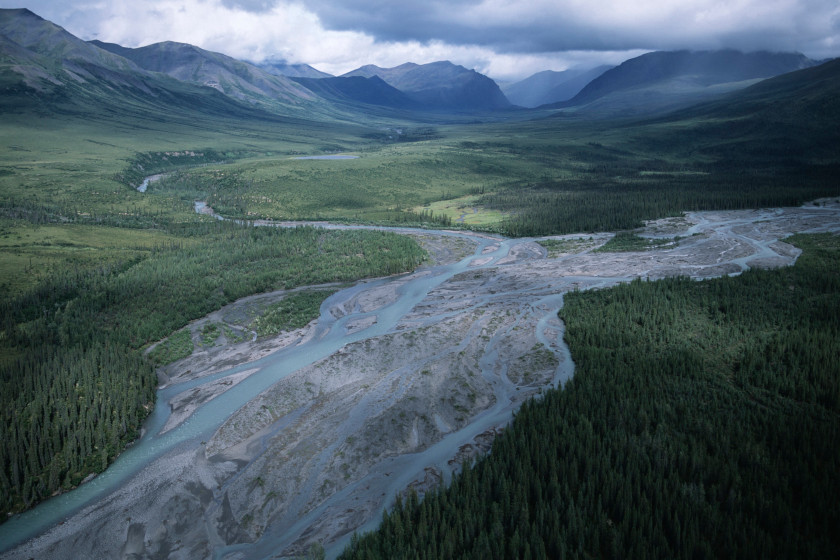
Getty Images: DEA/M.SANTINI
There are no roads to this massive park located in the northern part of Alaska. The only way to get there is to hire a pilot to fly you in an airplane. It's not uncommon for this park to only get around 10,000 visitors annually because it's so hard to reach. The National Park Service had to put the headquarters all the way down in Fairbanks simply because there's no way to build one on site. But, even if you travel with a group, it's not hard to find solitude. This park is a whopping eight million acres. That makes it larger than the states of Vermont or New Hampshire! Gates of the Arctic is home to bears, caribou, moose, wolves, Dall sheep, muskox, and many more. The jagged peaks of the mountains spike more than 7,000 feet out of the Arctic tundra. There are no facilities or campgrounds, and cell phone service is non-existent. We recommend renting a satellite phone in Fairbanks if you don't already own one, just for safety reasons. The NPS basically allows people to setup anywhere so long as they pack out their trash afterwards. The only downside to this park is the logistics of getting there. It's not going to be cheap to rig together a series of flights to reach it. And even when you do that, you're at the mercy of the Alaskan elements. Bad weather can quickly delay your flight in or out by days. Plan accordingly.
Isle Royale, Michigan
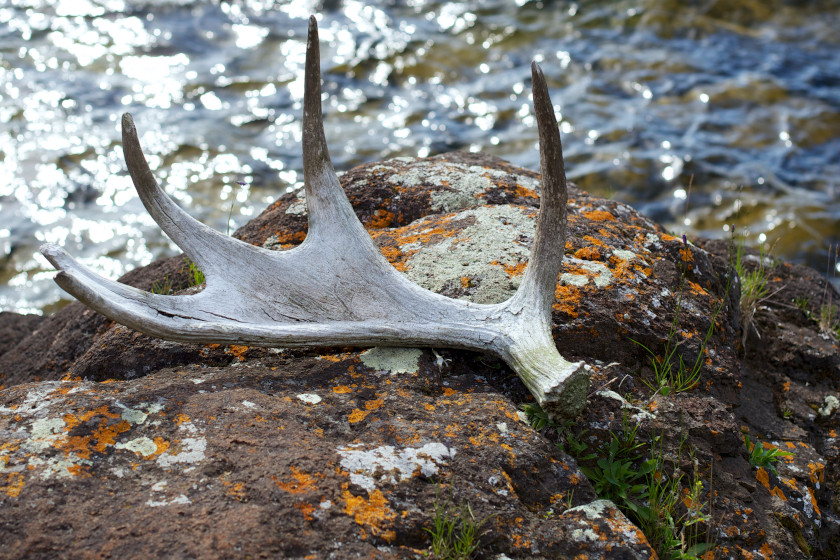
Getty Images: Innerflux
This island gem is one of the new U.S. National Parks that has a closed season. That's because it's located in the middle of Lake Superior, and traveling across the big water of "Gitchee Gumee" by boat can get extremely dangerous in November and December. This park is approximately 570,000 acres of untamed wilderness that's home to moose and wolves. It rarely has overcrowding problems and receives less than 30,000 visitors a year because of the logistics of organizing a plane ride or a three- to six-hour boat ride depending on whether you depart from Houghton or Copper Harbor. Once in the park, kayaking, fishing, and backpacking opportunities abound. It's easy to find a lesser-used trail system and get away from it all for several days. There are camping cabins for rent, and some people do come to the island on quick day trips. But to do Isle Royale right, it's much more fun to take advantage of the first-come, first-serve free camping opportunities.
Dry Tortugas, Florida
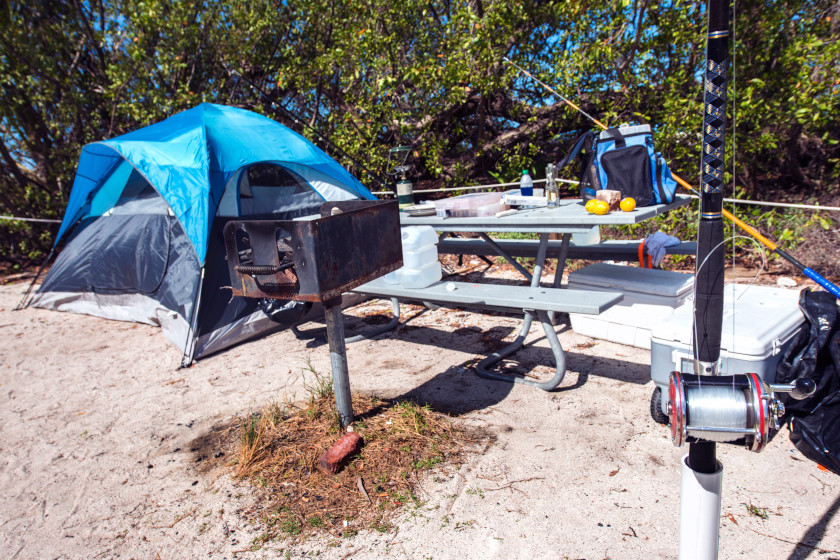
Getty Images: Boogich
This would probably be one of the most popular National Parks in the southern U.S. if not for the fact that it's out in the Gulf of Mexico. Dry Tortugas is made up of seven islands and sits nearly 70 miles from Key West. That means a nearly two-hour boat ride or an expensive seaplane charter. The unique thing about this park is that only one percent of it is on land, making it a paradise for snorkelers and divers. Fishing is only allowed in a select few areas, and requires a Florida fishing license. Most people who visit this park come to find a quiet beach where they can relax without the blare of boom boxes and hundreds of other people taking up every square inch of sand. The most crowded spot for park visitors is historic Fort Jefferson. You can make a day trip out of this one, but because the ferry ride costs about $200 for each adult, we'd recommend bringing some camping gear to get more for your money. There are composting toilets, but not much else as far as facilities. This park gets around 60,000 visitors a year, which makes it easier to get away from the million-plus people that go to the Everglades every year.
Denali, Alaska
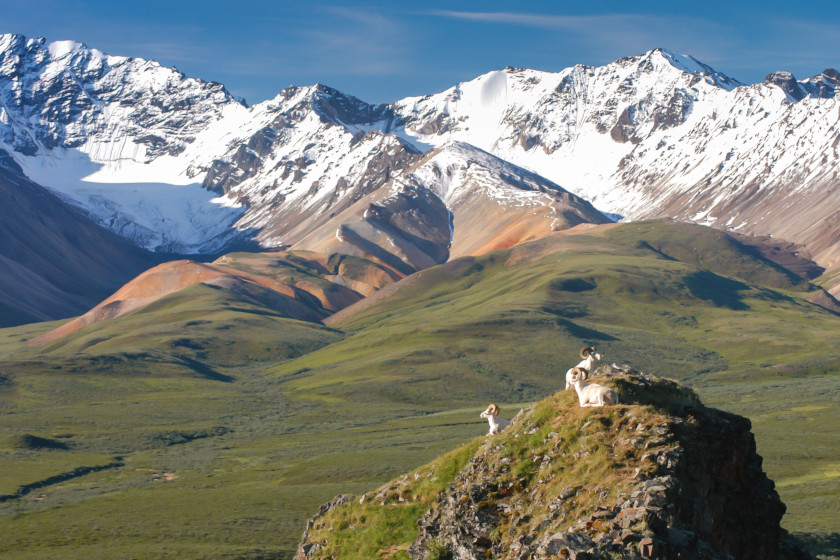
Getty Images: sarkophoto
You might be wondering how you can possibly avoid people in a park that gets 600,000 visitors a year. Well, Denali is just under five million acres of backcountry wilderness. If you cannot find a quiet corner in a park bigger than Vermont, we'd say you're not trying hard enough. Obviously, if you go to the main visitor center near Healy, you're going to encounter throngs of people who made the long drive up from Anchorage. The NPS even offers bus tours, so you might want to avoid those areas. Most of those tourists aren't going to wander very far from the gift shop and parking lots. The nice thing about Denali is there are no entrance fees. That means you can walk in from practically any other piece of public land surrounding it and find solitude. Trekking into the backcountry also gives you much better odds of spotting a Dall sheep, grizzly bear, or a caribou.
Wind Cave National Park, South Dakota
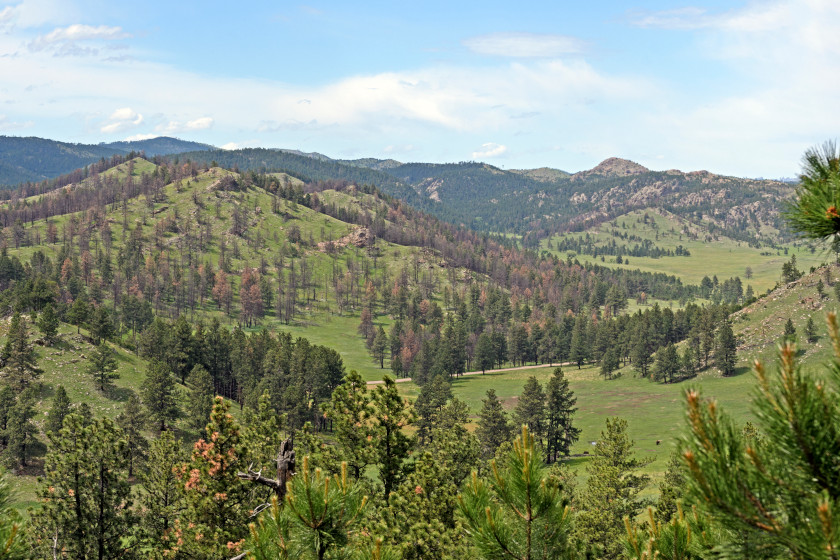
Getty Images: Wildnerpix
This park was founded by Theodore Roosevelt back in 1903, yet somehow manages to still be one of the least crowded National Parks despite its location in the tourist-rich Black Hills of South Dakota. It only gets around 125,000 visitors every year. Most of them are probably too distracted by Mount Rushmore, the Crazy Horse Memorial, and the bevy of tourist trap stuff in Deadwood. Even nearby Custer State Park seems to draw more attention. That's fine with us because it means we get more of the 34,000-acre park to ourselves. Most people who do visit are going to be checking out the Wind Cave, which leaves the 30 miles of hiking trails relatively quiet by comparison. It's a great place to watch bison and elk without having to share the view with hundreds of other gawking tourists.
Big Bend, Texas

Getty Images: james pharaon
Unfortunately, the secret is out on this hidden gem that's tucked up against the border with Mexico, and it's starting to see a steady rise in traffic. It gets close to 400,000 visitors a year, but it is possible to ditch the crowds within the 800,000-acre confines of Big Bend. Most of the heavy traffic is going to be around the Chisos Mountains Lodge and Visitor Center. We recommend hitting one of the backcountry campsites instead; you can snag a permit at the Panther Junction Visitor Center. Just be aware that it's first-come, first serve on those sites. Big Bend has over 150 miles of hiking trails to enjoy. The higher in elevation you go, the fewer people you'll see. The only thing we don't like about Big Bend is the extreme heat. Hit the trailheads early in the morning or in the evening when there's only a few hours of daylight left, because the temperature can soar to 100 degrees or more most afternoons. Another way to escape the crowds is to drive down one of the park's many primitive dirt roads. These roads can be extremely rough, and most require a high clearance vehicle with four-wheel drive, but they can take you to remote parts of the park that causal visitors never dare to visit with a rental car.
Voyageurs National Park, Minnesota
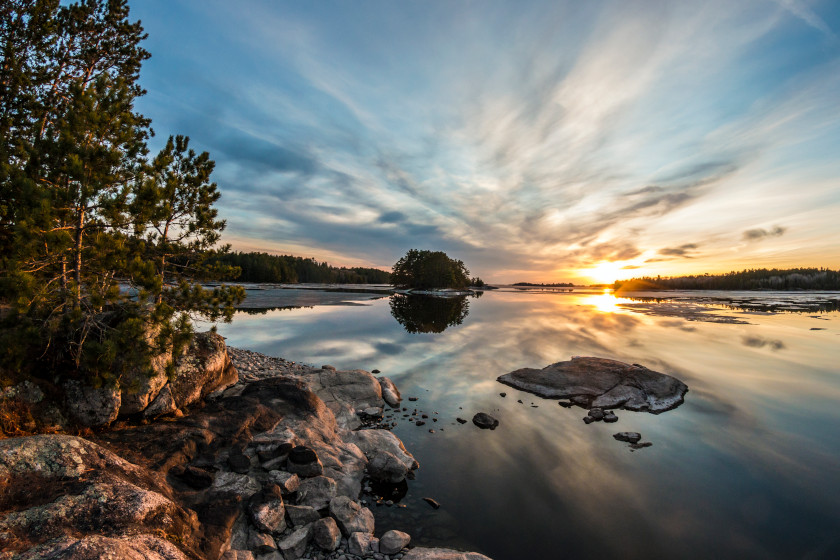
Getty Images: BlueBarronPhoto
This park only gets around 230,000 visitors a year, and that's mostly because it's in the extreme northern part of Minnesota without any major cities anywhere close. The nearest is Duluth, and even that's a nearly three-hour drive. Most of this park can only be accessed via watercraft of some kind. Make no mistake, you will encounter some boat traffic near launch points and the Lake Kabetogame and Ash River Visitor Centers. The lake is where you're going to see the most people. The good news is, the further north you go, the more peaceful it becomes. One thing we appreciate is there are no modern campgrounds or facilities, just 270 or so basic sites that can only be reached by boat. This usually scares away the casual campers who are apt to make the most noise and ruin the whole experience for those looking for quiet conditions.
Wrangell-St. Elias, Alaska
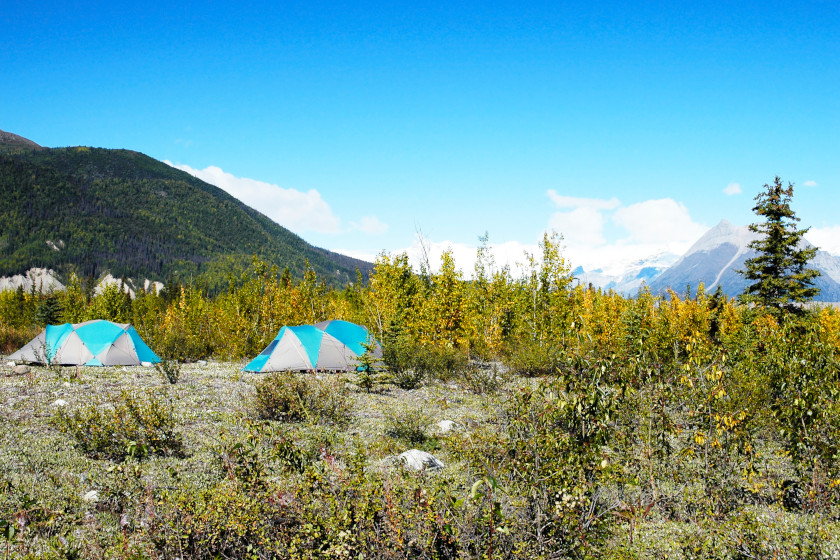
Getty Images: brytta
America's largest National Park covers a staggering 13 million acres. Roughly speaking, it's larger than several east coast states in the lower 48 put together. For perspective, the two visitor centers sit a staggering 260 miles apart! Despite the stunning beauty and vast wilderness, it only receives a little over 70,000 visitors annually despite being only about a three-hour drive from Anchorage. It's a combination of factors that keeps most casual visitors away, but mostly the vast distances between things, and also the fact there are no fuel services in the park. There are also few ways to explore the interior other than backpacking into it or taking an expensive float plane. That makes Wrangell-St. Elias the perfect spot for serious backcountry hikers and campers to have a true wilderness experience in the Last Frontier.
For more outdoor content from Travis Smola, be sure to follow him on Twitter and Instagram For original videos, check out his Geocaching and Outdoors with Travis YouTube channels.
